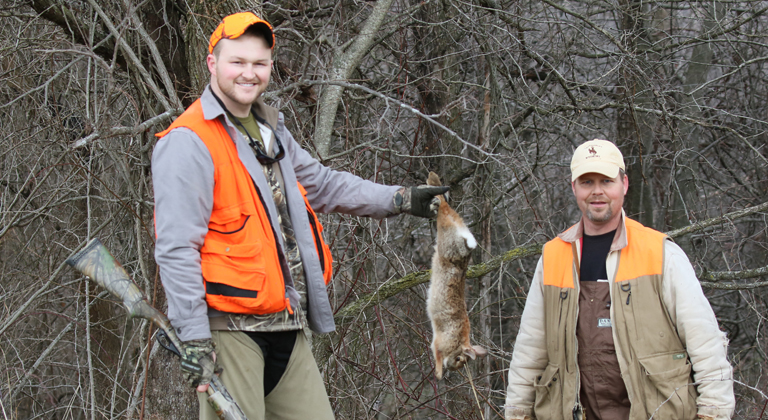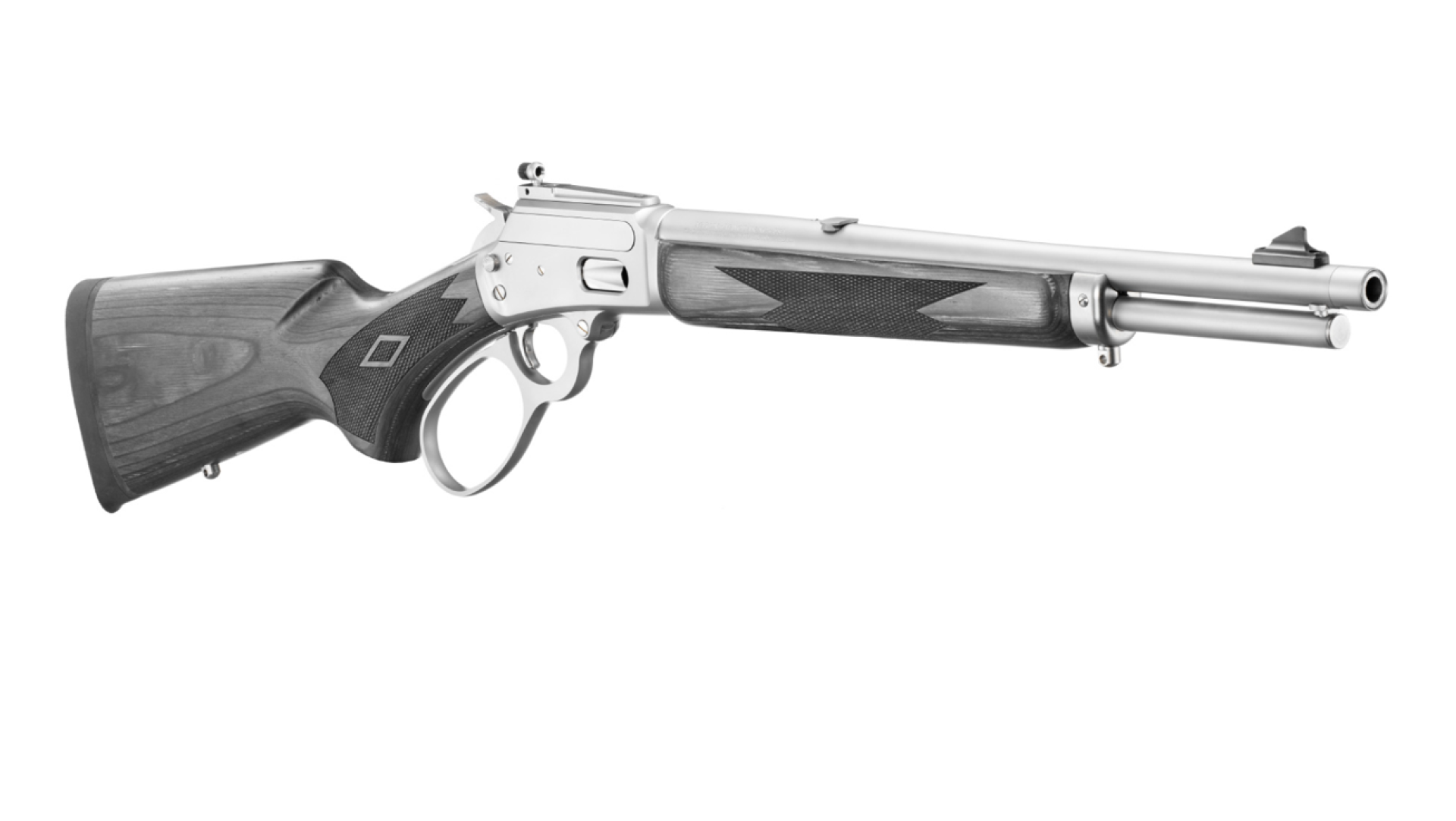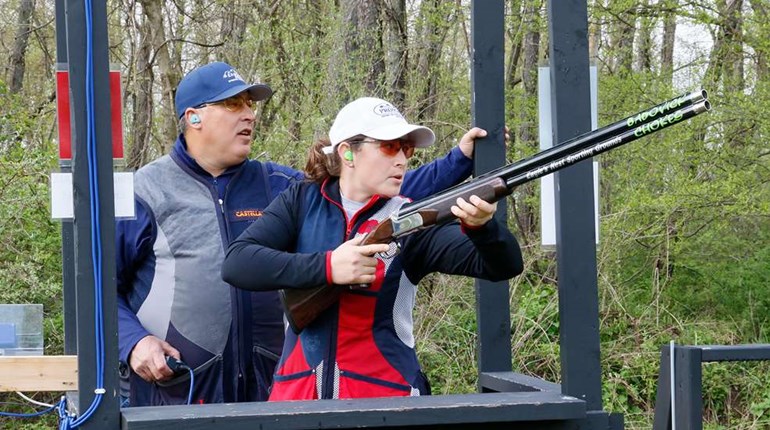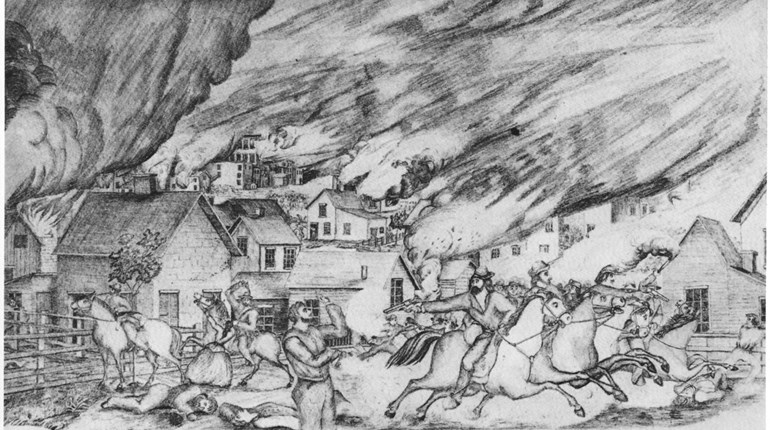
There is a type of small-game hunting, once common in much of the U.S., that is now slowly fading away. And that’s unfortunate, because it’s not only a good way to take rabbits, it’s also a ton of fun!
I’m talking about hunting cottontails rabbits with beagles, and it’s something I did for some 25 years. I reluctantly gave it up about a decade ago when my oldest dog died. What I now miss most about the sport is the sound of the chase–hunters call it hound music.
“Yeah, there certainly aren’t as many of us around as there used to be,” said Rick Truman, referring to the number of rabbit hunters using dogs today compared to half a century or more ago. “Raising and training beagles takes a serious time commitment, and that’s a commodity most Americans don’t seem to have much of these days, including hunters.”
Truman has been hunting with beagles so long that he doesn’t even care to take along a shotgun anymore. Instead, he prefers letting others in his hunting party do the shooting. “I just enjoy watching and hearing the dogs work,” he said.
Hunting conditions couldn’t have been better that mid-January morning a few months ago when I joined Truman and three of his friends (Dave Miller, Greg Thomas and Scott Lynch) for a hunt in eastern Ohio. The temperature was just above freezing, with no wind and the ground moist; excellent scenting conditions for the dogs. The toughest rabbit-hunting conditions—hot, dry and windy—usually occur during early season, causing scent to dissipate quickly.
Entering a woody briar patch, we didn’t have to wait long before one of four beagles (Brooke, Daisy, Gabby and Ike) crossed a fresh rabbit track and opened up in a long, drawn-out howl. The other three dogs soon joined in and the first chase of the day was on, the beagles filling the woods with their excited yipping and barking. After about 20 minutes, the rabbit holed. But many others didn’t that morning, and we ended up bagging five cottontails.
Scott Lynch, a young man in his 20s, had never hunted behind beagles before. “I’m amazed at how the dogs bring the rabbit back around to the hunters,” he said.
There is an explanation for that. Cottontails in quality habitat live their entire lives within about a quarter-mile section of land. They know that parcel intimately and seldom venture out of it since all their needs—food, water and shelter—can be found within that parcel. That’s why, when a beagle strikes a hot rabbit track, it’s the wise hunter who stays put. He knows that if the rabbit doesn’t dive into a hole during the chase, it will eventually circle back to the original jump point, offering a shot.
Wildlife biologists say that even given generous daily bag limits for cottontails and months-long annual hunting seasons in most states, there is no concern of overharvest. That’s because cottontails reproduce like, well…like rabbits, having up to four or five litters per year.
If you’d like to get into this game there are two routes: buying a started dog or purchasing a puppy. Either way, steer clear of field-trial beagles, as field-trialing is a totally different game from hunting.
Most started beagles are a year or two old and will get you rabbit hunting immediately. Just make sure you actually see and hear the dog run a rabbit before plunking down your hard-earned money and taking the dog home. When purchasing a puppy, you obviously can’t see the dog run a rabbit, but you may be able to see one or both of the parents run. If that’s not possible, make sure the puppy you choose comes from quality hunting stock.
Someone who knows what characteristics to look for when choosing a hunting beagle is Mike Tontimonia of Ravenna, Ohio. Mike estimates he’s owned 150 beagles during his lifetime—both hunters and field-trialers—and has had as many as 20 dogs in his kennel at any one time.
“A good dog needs to have several qualities to make a top hunter,” said Tontimonia. “First of all, a beagle needs to have what I call hunt, meaning chasing rabbits is what he or she lives to do. That’s a trait that only comes from good breeding. Good hunters breed good hunters.”
Tontimonia continued, “A top dog searches well, meaning it has a strong desire to find a rabbit and will work hard to locate one. And a good beagle also needs to be able to stick to a track, making adjustments for the particular hunting conditions on any given day.”
Mike Tontimonia often hunts with Rick Truman and his buddies, the group making good use of the many rabbits they take. They turn them into a hearty stew with vegetables they call “hare soup.” The following isn’t that secret recipe, but rather a simple, easy one my wife came up with years ago for baked wild rabbit. Add a baked potato and salad and it can’t be beat—even by hare soup.
Baked Wild Rabbit
Wash and pat dry rabbit pieces (legs, back, etc.). Rub pieces liberally with shortening, place in baking dish, and put a few chunks (teaspoon size) of shortening on the rabbit pieces. Sprinkle with Lawry’s Seasoning Salt. Cover dish tightly with aluminum foil. Bake at 325 degrees for 1.5 to 2 hours.




































